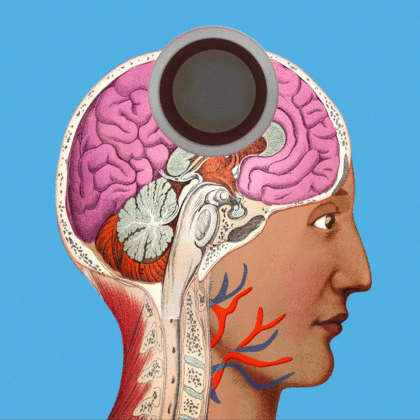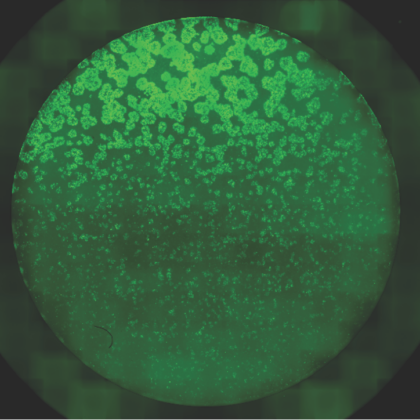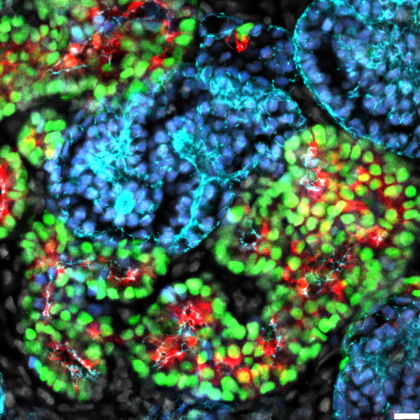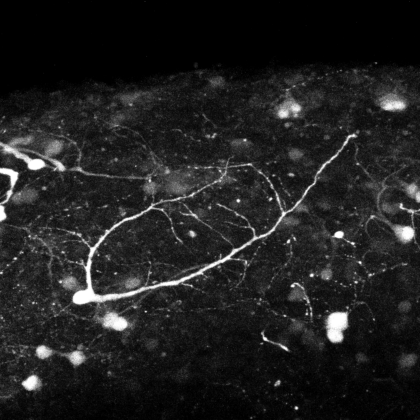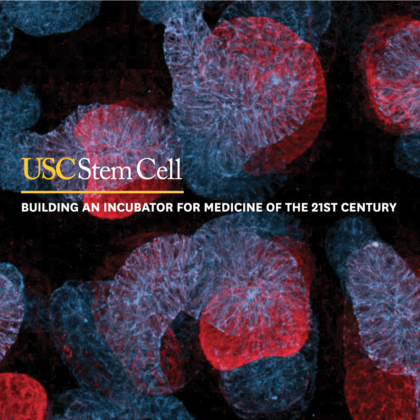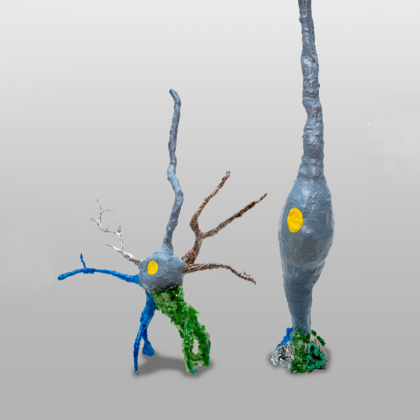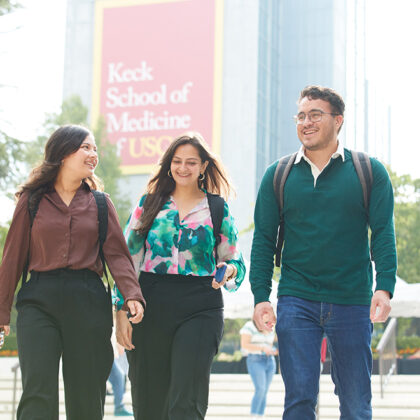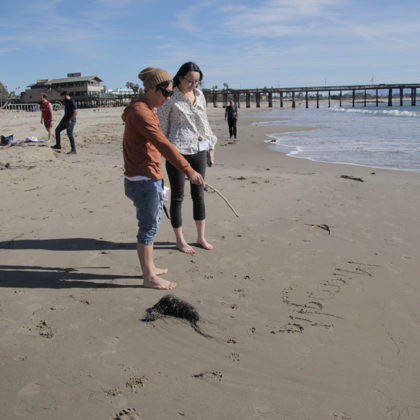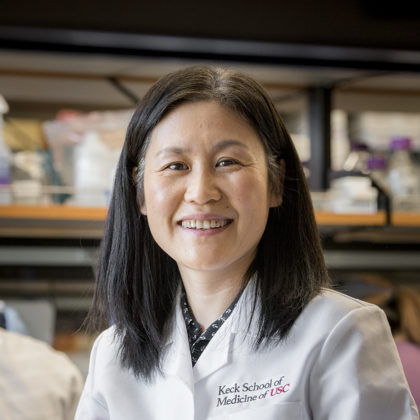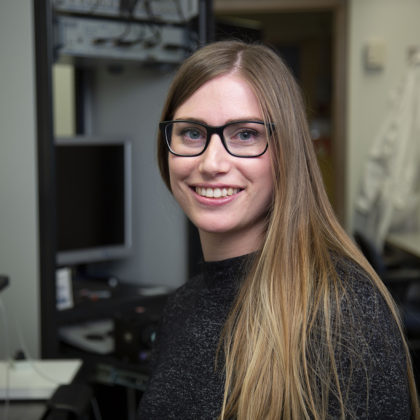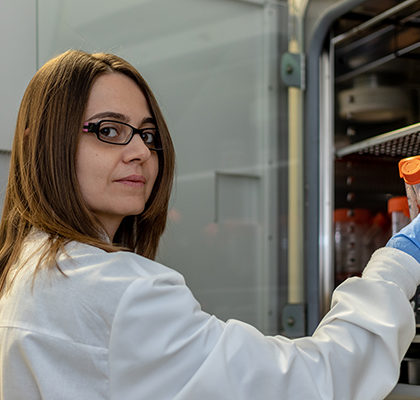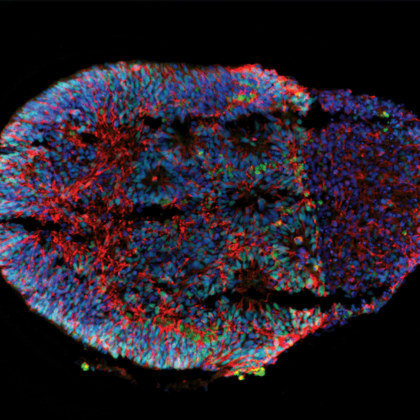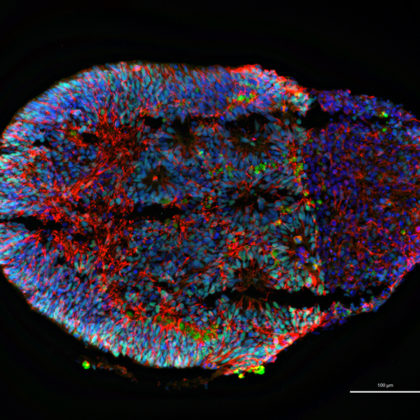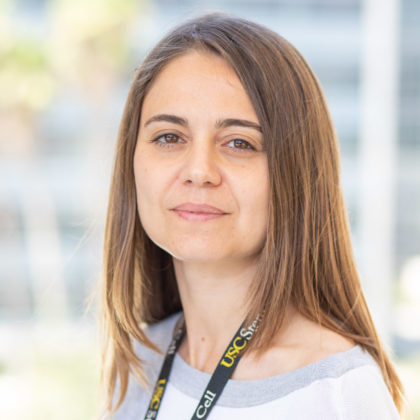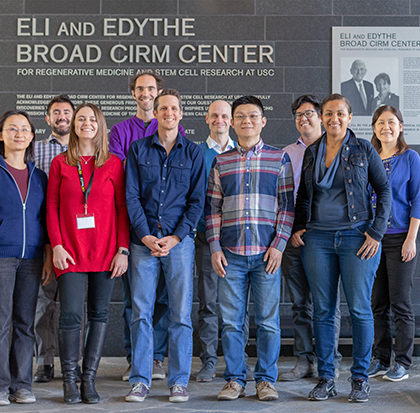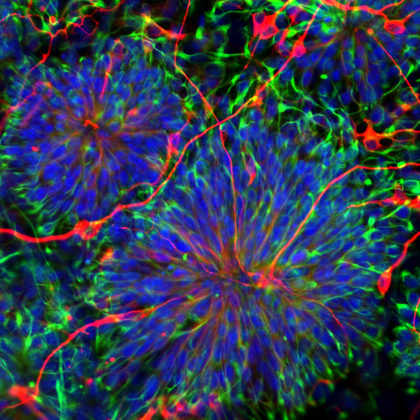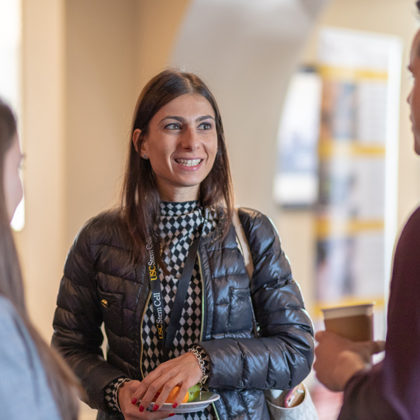Dr. Quadrato’s laboratory focuses on understanding the cellular and molecular basis of human brain development and disease. By combining the use of emerging models of the human brain with single cell omics approaches, the laboratory is aiming to identify cell type specific disease mechanisms, and above all, new treatments for human neurodevelopmental disorders.
Stories
Cell by cell: Rebuilding the body
USC researchers are revolutionizing how we treat disease by harnessing stem cells as “living medicine.” Anyone who’s healed from a cut or a scrape has witnessed the incredible regenerative power of stem …
By exerting “crowd control” over mouse cells, scientists make progress towards engineering tissues
Genes aren’t the sole driver instructing cells to build multicellular structures, tissues, and organs. In a new paper published in Nature Communications, USC Stem Cell scientist Leonardo Morsut and Caltech computational biologist …
$3.95 million CIRM grant establishes USC ASCEND Center to make stem cell-derived organ models accessible to all
To democratize access to lab-grown organ-like structures known as organoids and other advanced stem cell and transcriptomic technologies, USC will launch the CIRM ASCEND Center, dedicated to “Advancing Stem Cell Education and …
USC Stem Cell scientists develop a game-changing organoid model to study human cerebellar development and disease
In a first for USC Stem Cell scientists, the laboratory of Giorgia Quadrato, an assistant professor of stem cell biology and regenerative medicine, has pioneered a novel human brain organoid model that …
Building an Incubator for Medicine of the 21st Century
USC Stem Cell is pleased to introduce our new publication. We hope you’ll enjoy reflecting back on our history, while looking ahead to the transformative times to come. Read now at https://stemcell.keck.usc.edu/wp-content/themes/stemcell/incubator.
The Autism-linked gene SYNGAP1 could impact early stages of human brain development, USC study reveals
New research shows that variants of SYNGAP1, a gene previously thought only to affect synapses between mature neurons, may disrupt early development in the brain’s cortex, a region involved in higher-order cognitive …
USC doubles the number of scholarships for stem cell master’s students
This year, ten students earned scholarships that enabled them to attend USC’s master’s program in stem cell biology and regenerative medicine, one of the only programs of its kind in the United …
Scientists feel the sand between their toes at the retreat for USC’s stem cell department
A pair of young scientists picked up a piece of driftwood and thoughtfully traced a series of letters in the wet sand of Ventura Beach. The word “microglia”—referring to the immune cells …
USC Stem Cell scientist Min Yu brainstorms new ways to beat breast cancer
For USC cancer researcher Min Yu, starting her lab meant building a culture of like-minded scientists. When she first joined the university as an assistant professor of stem cell biology and regenerative …
Marcella Birtele named Choi Family Postdoctoral Fellow at USC Stem Cell
In one sense, Marcella Birtele is following in her father’s footsteps: he works as an electrician in Italy, and she studies the electrophysiology of the brain as a postdoctoral fellow in Giorgia …
USC Stem Cell scientist Giorgia Quadrato receives a 2020 Mallinckrodt Grant
Giorgia Quadrato, an assistant professor in USC’s Department of Stem Cell Biology and Regenerative Medicine, was recently awarded an Edward Mallinckrodt Foundation (EMF) grant to further her research about modeling human brain …
Brain development and disorder research receives $1.5 million NSF boost
The human brain is an incredibly complex organ to study in its living tissue form. Researchers cannot experiment on human tissue directly, and animal models are often too different to human physiology …
USC scientists use brain organoids to study intellectual disability, with support from the SynGAP Research Fund
Maybe a child misses a developmental milestone, such as rolling over, or saying that first word. Perhaps the child also falls down due to seizures, or develops symptoms of an autism spectrum …
Baxter Foundation supports research in pediatric blindness, human brain development
The Donald E. and Delia B. Baxter Foundation is supporting researchers exploring the causes of pediatric blindness and intellectual disability research by granting $100,000 awards to two assistant professors at the Keck …
USC Stem Cell junior faculty balance babies with biomedical research
Growing stem cells isn’t just something junior faculty do in the lab. Eight of the junior faculty in the Department of Stem Cell Biology and Regenerative Medicine recently welcomed new babies into …
From restoring sight to reversing brain damage, USC stem cell researchers are making life-changing discoveries
If anyone has a clear vision of the power of stem cell cures, it’s Anna Kuehl. She suffered a retina-wrecking disease that cost her much of her sight before USC physicians surgically …
Stem cell scientist Giorgia Quadrato joins USC’s brain trust
Giorgia Quadrato loves a good challenge. That’s why USC’s newest assistant professor of stem cell biology and regenerative medicine currently spends her time growing 3D networks of human nerve cells, called brain …
USC researchers converge at the Interdisciplinary Stem Cell Symposium
“The field of stem cell biology is one of our great convergence opportunities,” said USC Provost Michael Quick, addressing an audience of biologists, chemists, physicists, engineers, clinicians and many others. This diverse …

